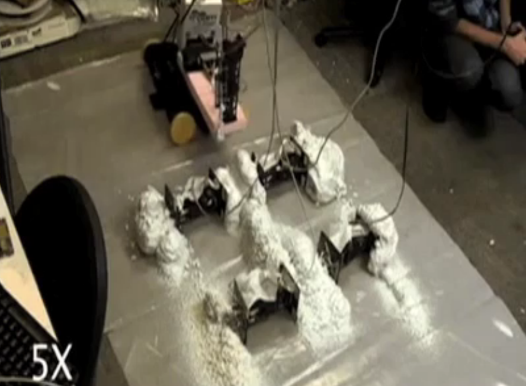Foambot Creates Itself Out of Sprayable Foam, Becoming Whatever Robot You Need
Like most machines, Robots are generally built toward a purpose or a set of narrowly defined applications, like automobile manufacturing...

Like most machines, Robots are generally built toward a purpose or a set of narrowly defined applications, like automobile manufacturing or explosive ordnance disposal or making doner kebabs. So how do you make a robot that is truly multi-utility, adaptable to any job? You make a robot that can make itself.
Enter Foambot, a University of Pennsylvania creation that constructs itself on the spot depending on what kind of robot is needed at the time. Foambot consists of a mobile “mothership” platform and several joint modules that can create powered kinetic motion. Programmed for a task, the mothership can configure the joints on the ground and spray them with a mixture of chemical reagents that harden and expand into a solid urethane foam.
Once connected by the hardened foam, the joints are coordinated by a piece of software that analyses the way the mothership has connected them and creates a motion scheme on the fly. And like that, you have a robot. Kind of like Voltron, but without the defender-of-the-universe mission profile.
The concept is pretty rudimentary for now, but it’s not hard to envision such a make-it-as-you-go platform being refined into a very useful concept, particularly for situations where humans know they might need a robot but don’t know what kind of robot they might need (say for humanitarian missions or for future space exploration, for instance). The Navy is already exploring this idea to some degree via 3-D printing. As you can see in the video below, this kind of concept is still taking form. Now we just have to wait for it to solidify.